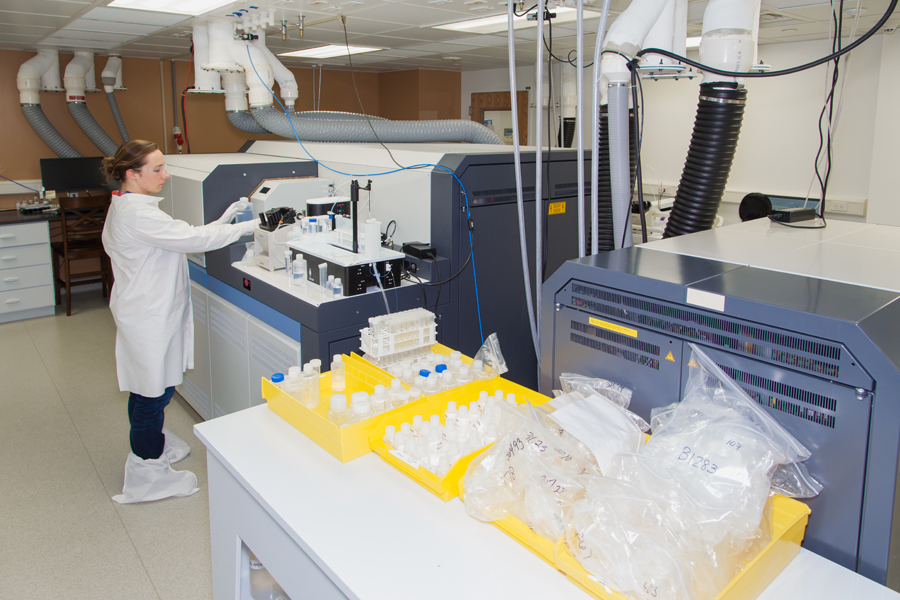Tracing the isotopic signature of lead (Pb) in both an adult who had bullet fragments embedded in his leg for 10 years and his young child who also had elevated blood lead levels (BLL) is the subject of a recent paper in Biological Trace Element Research.
The paper is the first resulting from isotopic analyses performed on the Multicollector Inductively Coupled Plasma Mass Spectrometer (MC-ICPMS) in the Wisconsin State Laboratory of Hygiene Trace Elements Clean Lab. The case is novel in that the MC-ICPMS was used for testing both clinical and environmental samples. The technology has been used for environmental testing for several years, but using it to test clinical specimens is still quite rare.
The article highlights the power of MC-ICPMS technology to determine isotopic signatures for environmental source tracking in public health.
Read the article here — http://link.springer.com/article/10.1007/s12011-016-0872-3
From the article …
“This study compared the high-precision isotopic fingerprints (<1 ‰ 2σ external precision) of Pb in the adult’s and child’s whole blood (WB) to the following possible Pb sources: a surgically extracted bullet fragment, household paint samples and tap water, and a Pb water-distribution pipe removed from servicing a house in the same neighborhood. Pb in the bullet and adult WB were nearly isotopically indistinguishable (matching within 0.05–0.56‰), indicating that bullet fragments embedded in soft tissue could be the cause of both acute and chronic elevated blood Pb levels. Among other sources investigated, no single source dominated the child’s exposure profile as reflected in the elevated BLL.”

Kate Smith, WSLH chemist and lead author on the article, analyzes samples using the Multicollector ICP-MS in the WSLH Trace Elements Clean Lab. The MC-ICPMS contains 9 Faraday detectors under high vacuum. Each detector can be tuned to measure the specific atomic mass of the individual isotopes of an element. With 9 detectors, the instrument is capable of measuring up to 9 different isotopes simultaneously. The instrument also contains a magnet that creates an electric field for separating the different masses of interest. Measuring the relative abundances of the isotopes of an element provides a “fingerprint” of the element in that sample. This can help determine where an element – and by association the sample – may have come from geographically, what environmental factors may have impacted the sample, or can be used as a tracer in clinical specimens, among other applications.
